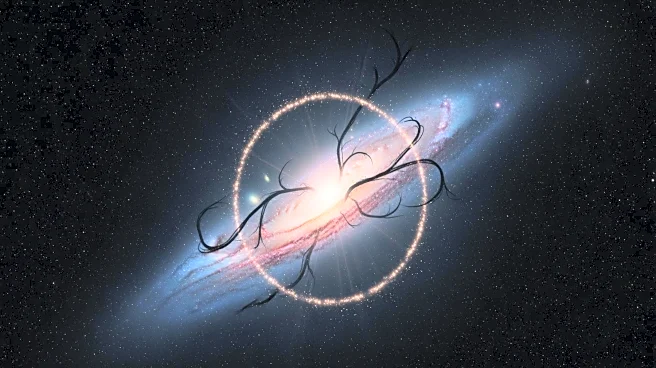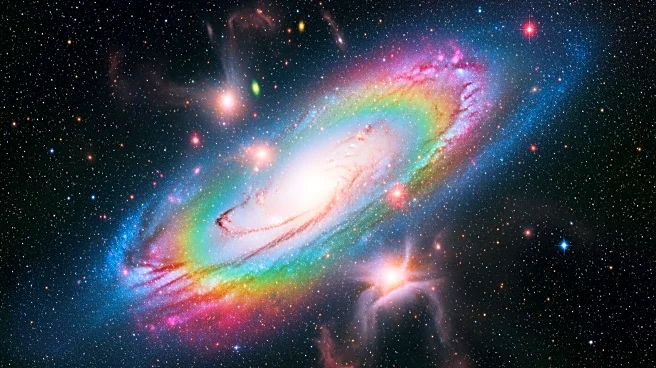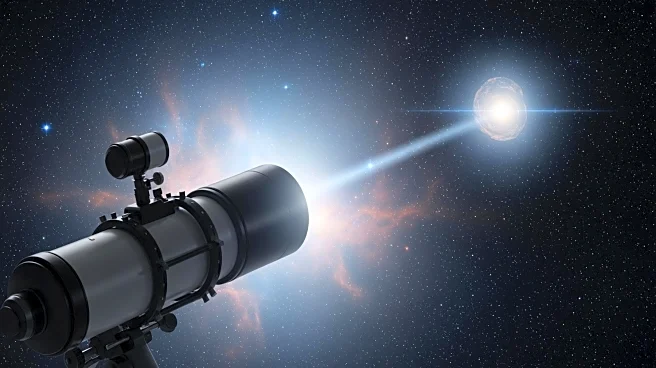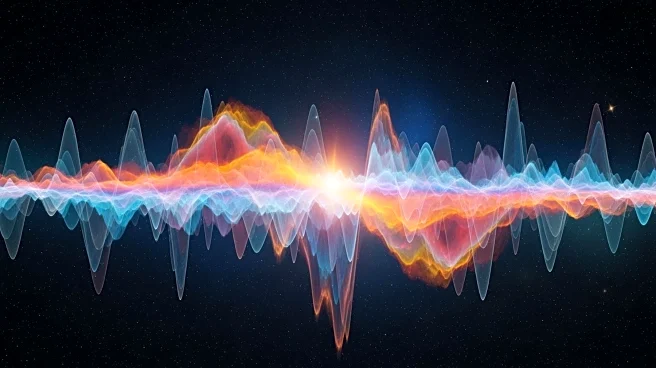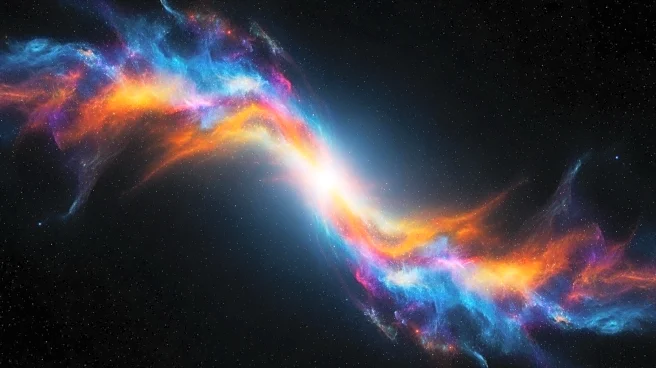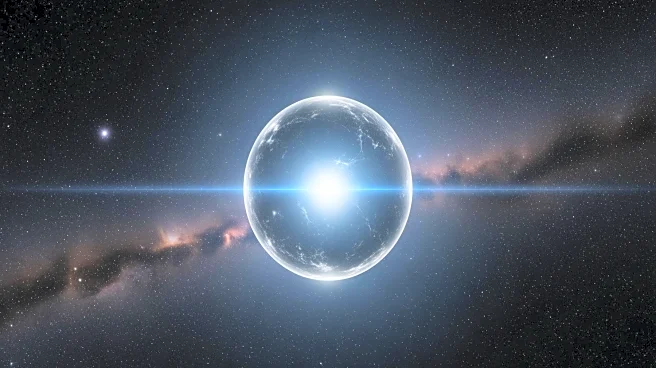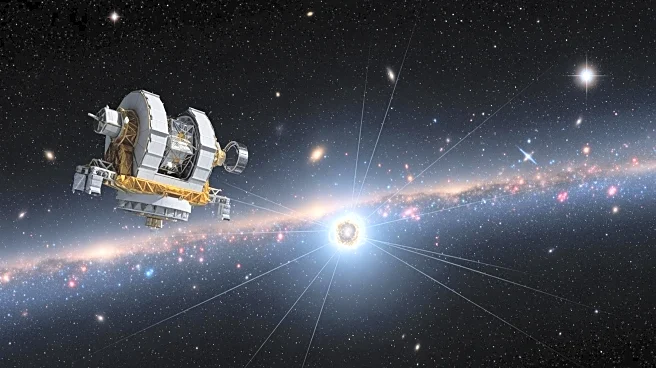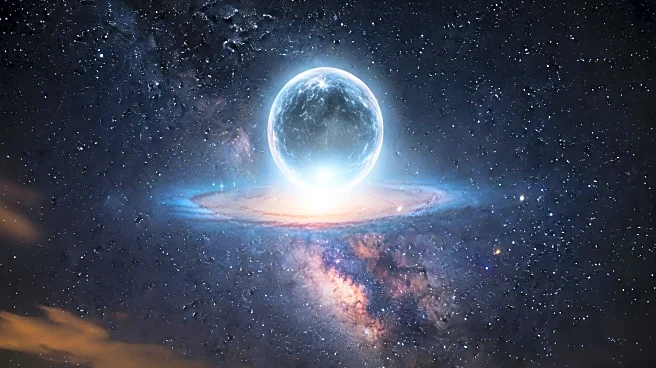What's Happening?
A new study proposes that the mysterious gamma-ray glow at the Milky Way's center may be linked to dark matter. Researchers have found that dark matter near the galactic center is flattened, not spherical,
as previously thought. This shape aligns with the observed gamma-ray signal, suggesting that dark matter particles might be colliding and annihilating each other, producing gamma rays. The study challenges previous assumptions and suggests that dark matter could be responsible for the unexplained glow.
Why It's Important?
This research could reshape our understanding of dark matter, a fundamental component of the universe. If dark matter is indeed causing the gamma-ray glow, it would provide a new method to study this elusive substance. The findings could lead to a better understanding of the universe's structure and the role of dark matter in galaxy formation. It also highlights the importance of revisiting scientific assumptions and using advanced simulations to explore cosmic phenomena.
What's Next?
Further observations with new telescopes, such as the Square Kilometre Array and the Cherenkov Telescope Array, are needed to distinguish between dark matter and other potential sources of the gamma-ray glow. These instruments could provide sharper observations, helping to confirm or refute the dark matter hypothesis. The study's findings may also prompt additional research into the shape and behavior of dark matter in other galaxies.
